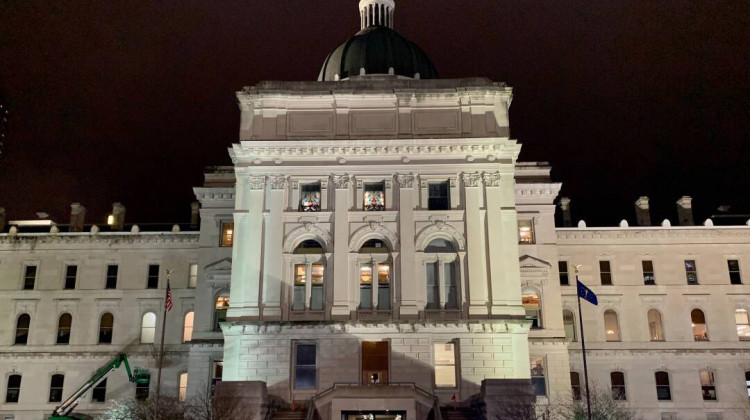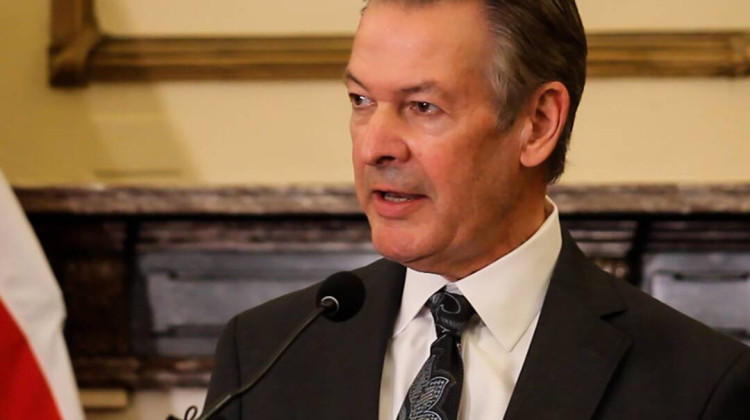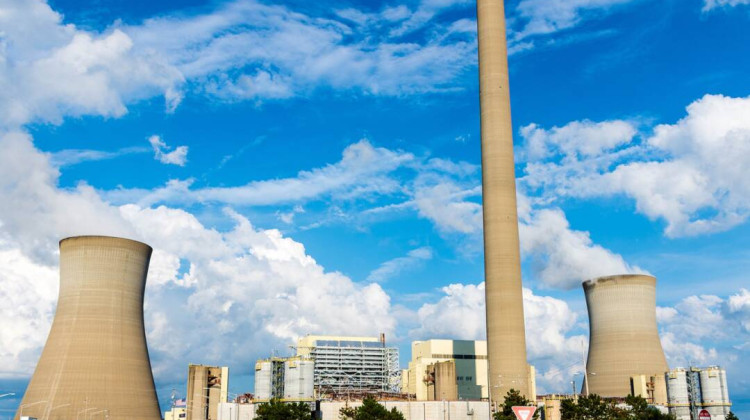
October is the first month to hit the 3 percent unemployment rate threshold since September 2021. But it is still low compared to the nation and Indiana's historic rates.
Adam Yahya Rayes / IPB NewsIndiana’s unemployment rate increased slightly to 3 percent in October, according to new Bureau of Labor Statistics estimates. Each BLS release provides a preliminary number that is revised the month after.
It’s the first month to hit the 3 percent threshold since September 2021. However, the rate is still low compared to the nation and Indiana's historic rates.
“Historically, labor markets are astonishingly healthy now,” said Michael Hicks, an economist at Ball State University, noting that wages are up in many industries. “Which is just a really good place for low-wage workers, in particular, to be right now.”
For example, the average retail wage in Indiana was almost $18 an hour in October 2022, according to the Bureau of Labor Statistics. That’s significantly higher than pre-pandemic average wages, which peaked at $15.69 an hour in November 2019.
“So while we should anticipate some slowing in the months to go, we're going from a really good place,” he said.
The reason he and other economists anticipate the labor market “slowing” comes down to inflation and the Federal Reserve’s efforts to fight it by raising interest rates on loans. The expectation is companies will borrow less money and, as a result, reduce production.
That’ll put less demand on the global supply chain and bring down the sky-high prices now seen for things like turkey.
READ MORE: Survey: Hoosiers can expect to pay about 14 percent more for Thanksgiving this year
But the Federal Reserve itself recognizes this reduced production will likely also bring layoffs and reduce wages, hurting workers. The belief is that the current inflation hurts more people, more significantly.
Hicks and other economists heavily emphasize the value of further education in times like these. They say higher levels of education can help insulate workers from the impact of a recession or get them on their feet faster.
But Indiana’s workforce broadly lacks credentials and, he said, it may already be too late for many workers to get one before a downturn hits.
“If I may just put that in historical context,” Hicks said. “The last time we really moved into a recession, because the Federal Reserve was raising rates to reduce inflation, was 1981 or 1982. So if you were alive and you remember that period of time, and particularly here in the Midwest, it was an astonishingly painful downturn.”
The difference, he said, is the unemployment and inflation rates were much higher going into that recession than they are now.
“So just the level of lost demand that we have to do to fix the inflation expectation is much smaller. And then thirdly, the affected industries are likely to be manufacturing and construction, which are a much smaller share of the overall economy today,” he said. “Thinking back to 1981-82, it's the same dynamic at play. But the conditions are so much more favorable today for a soft landing or a modest downturn.”
Join the conversation and sign up for the Indiana Two-Way. Text "Indiana" to 73224. Your comments and questions in response to our weekly text help us find the answers you need on statewide issues.
But manufacturing and construction tend to play a larger role in Indiana than they do in the nation as a whole. On its own, manufacturing has the largest number of workers of the state’s broad industry categories.
While the total number of Hoosier manufacturing employees grew in October’s preliminary estimates, several major layoffs have already struck parts of that industry in the past few months.
“So even if it's a soft landing nationally, or a very mild downturn, the effect can be fairly significant in those manufacturing intensive, intensive places across Indiana,” Hicks said.
Across all Indiana industries, the total number of layoffs and other discharges remained steady, with a preliminary estimate of 31,000 in September 2022. That’s the latest month available from the BLS’ Job Openings and Labor Turnover Survey (JOLTS) data. From January to July, that number had remained at or below 26,000 – with a historic low of 11,000 in May.
“When livelihoods are on the line, and you hear unemployment has gone up or more people are being laid off. It's very concerning,” said Victoria Prowse, Purdue University economist. “[But] I think we need to remember these are a small number of observations in the context of a broader situation.”
She points to the number of people quitting their jobs in the state, which JOLTS preliminary estimates suggest grew in September to 96,000.
“The higher unemployment could also just be part of people quitting their jobs to look for another job to try and get a pay raise,” Prowse said.
During the summer, it appeared the number of quits was beginning to shrink, dipping below 90,000 after months of being near or above 100,000.
Prowse and other economists initially saw the decline in quits between May and July as a sign that the “Great Resignation” could be coming to an end soon. Now, she’s not so sure.
“It does not look like screaming that we're heading towards a recession, it looks more like it's a very tight labor market,” she said. “Where it heads in the future, I think, is a little unstable because of the inflation setting. That’s uncharted water, at least in recent times, but I don't think it's alarming in any sense.”
The total number of job openings in the state for August and September were well below the majority of the last two years, JOLTS estimates show. The number of new hires shrunk slightly in September as well.
“Openings have gone down a bit, but they're still high in a broader context,” Prowse said. “So I think it's the workers who really have the power here – [at] least in terms of jobs, maybe not in terms of their wages or living conditions, and it's the firms who are struggling to hire and to fill their positions.”
September’s preliminary estimates still had fewer job seekers than job openings, about five to 10. That is a slight shift from previous months which had about three or four seekers for every 10 openings.
“We often take [job openings] as a leading indicator, it's maybe giving us a glimpse into the future,” Prowse said. “Openings have gone down a bit, but they're still high in a broader context.”
In the years before 2021, it was far more typical for month estimates to have fewer openings than seekers.
Ball State economist Hicks notes the tight labor market isn’t necessarily a great indicator of the quality of jobs people are getting or their ability to weather an economic downturn.
“It's just people changing from one business to another to get a sign-on bonus, because those businesses will give you a sign-on bonus, but they're very loath to increase wages,” he said. “And so that sort of churn at the lower end of wages gives the impression of a very dynamic economy when in fact there's not a lot of underlying economic growth here in Indiana.”
Data tells us Indiana's very tight labor market could potentially see some major shifts soon. But numbers don't capture the full story. Is this affecting you, your family or your business? Share your story with reporter Adam at arayes@wvpe.org or on Twitter at @arayesIPB.
9(MDAyMzk1MzA4MDE2MjY3OTY1MjM5ZDJjYQ000))
 DONATE
DONATE








 Support WFYI. We can't do it without you.
Support WFYI. We can't do it without you.